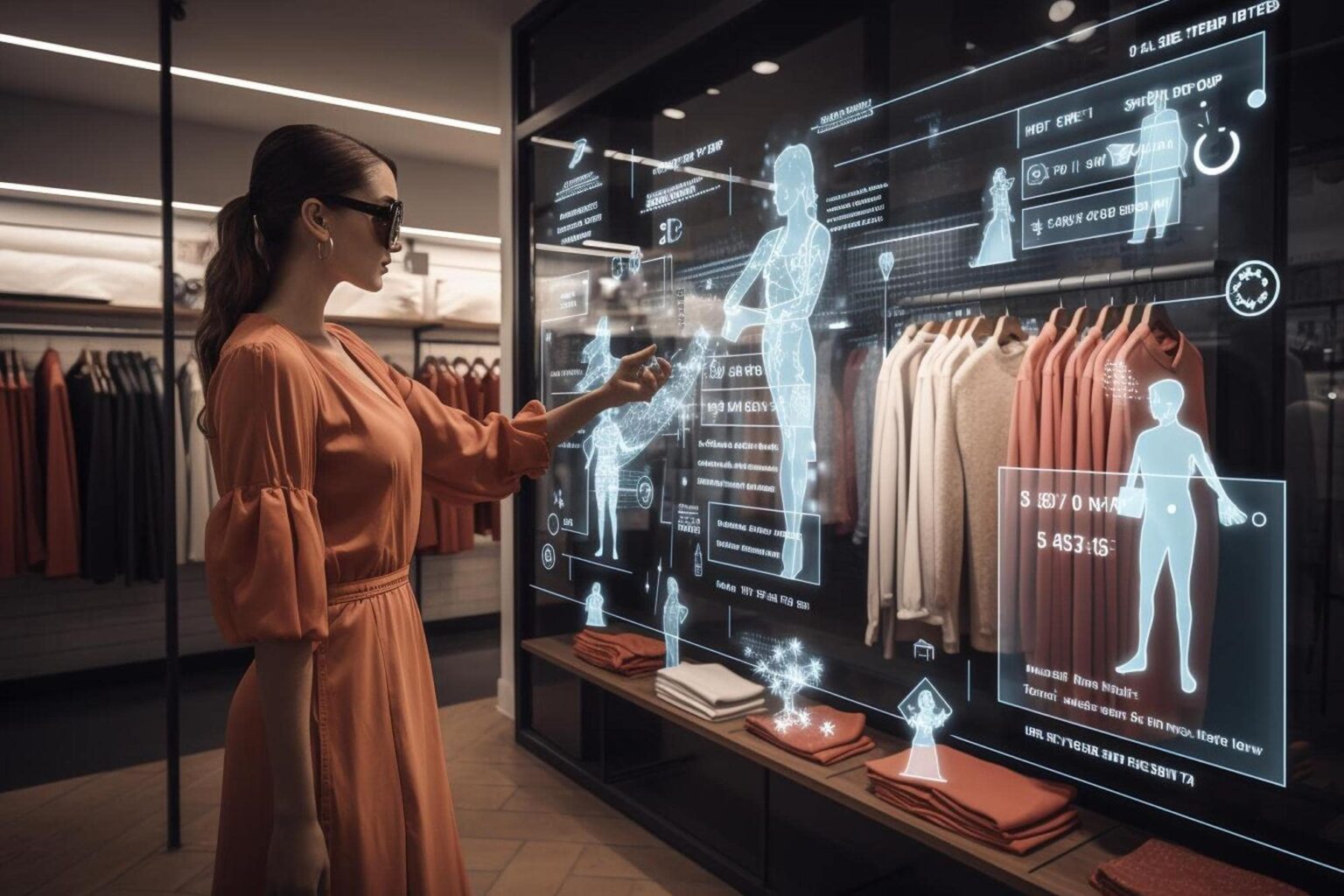Augmented Reality (AR) technology is revolutionizing both in-store and online shopping experiences by providing immersive, interactive, and personalized experiences for customers. Here’s how AR enhances shopping experiences in both environments:
- Virtual Try-Ons: AR enables customers to virtually try on products such as clothing, accessories, eyewear, and cosmetics before making a purchase. Through AR-powered apps or in-store kiosks, customers can see how items look on themselves in real-time using their smartphone camera or a virtual mirror. Virtual try-ons enhance confidence in purchase decisions and reduce the likelihood of returns, leading to higher customer satisfaction and conversion rates.
- Product Visualization: AR allows customers to visualize products in their real-world environment before buying. By superimposing virtual objects onto the physical world through a smartphone or tablet screen, customers can see how furniture, home decor, or electronic appliances would look and fit in their space. Product visualization enhances the shopping experience by providing a more accurate representation of products and helping customers make informed purchase decisions.
- Interactive Product Demonstrations: In-store AR displays and demonstrations allow customers to interact with products in a hands-on, immersive way. For example, customers can use AR-enabled devices to view 3D models, animations, or product features overlaid on physical products. Interactive product demonstrations engage customers, educate them about product capabilities, and create memorable experiences that drive brand engagement and loyalty.
- Enhanced Product Information: AR provides additional product information and context to shoppers, enhancing their understanding and appreciation of products. By scanning product labels or packaging with a smartphone, customers can access rich multimedia content, such as product specifications, reviews, videos, or tutorials. AR-enhanced product information empowers customers to make more informed purchase decisions and increases their confidence in the product’s quality and suitability.
- Customization and Personalization: AR enables customers to customize products to their preferences and see the results in real-time. For example, customers can use AR apps to personalize clothing designs, colors, or patterns and see the customized product rendered in 3D on their screen. AR customization tools enhance the shopping experience by empowering customers to create unique, personalized products that reflect their individual style and preferences.
- Virtual Showrooms and Try-Before-You-Buy Experiences: AR creates virtual showrooms and try-before-you-buy experiences that bring the convenience of online shopping to physical retail environments. Customers can explore virtual product catalogs, view 3D models, and interact with virtual products in-store using AR-enabled devices. Virtual showrooms enable retailers to showcase their full product range in limited physical space, providing customers with a wider selection and more immersive shopping experience.
- AR-Powered Navigation and Wayfinding: In large retail environments, AR-powered navigation and wayfinding tools help customers navigate the store more efficiently and locate products with ease. By overlaying digital markers, directions, or product information onto the physical environment, AR navigation apps guide customers to their desired destinations in-store. AR-powered navigation reduces frustration, enhances convenience, and improves the overall shopping experience for customers.
- Social Sharing and Engagement: AR experiences encourage social sharing and engagement, allowing customers to share their virtual try-ons, customized designs, or in-store experiences with friends and followers on social media platforms. By integrating social sharing features into AR apps and experiences, retailers can amplify brand awareness, generate user-generated content, and foster community engagement among customers.
Overall, augmented reality is transforming both in-store and online shopping experiences by providing immersive, interactive, and personalized experiences that enhance engagement, satisfaction, and conversion rates. By leveraging AR technology, retailers can differentiate themselves, drive customer loyalty, and stay ahead of the competition in today’s increasingly digital and experiential retail landscape.



